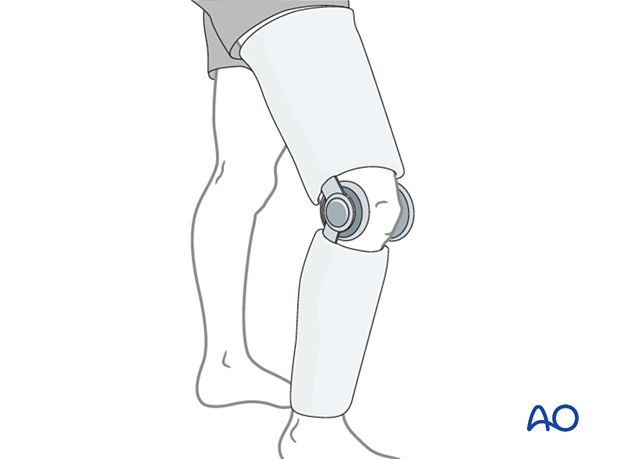Immobilization
1. Introduction
In the case of a medically infirm patient, the fracture is best managed with protection and immobilization. Prefabricated hinged knee braces or knee immobilizers are typically used when available.
A cylinder or a long leg cast is also an option.
2. Knee immobilizer
A knee immobilizer can be applied to all the fractures as a means of temporary splinting.

3. Hinged fracture brace
Angular splinting of the extremity allowing early knee motion.
As a means of definitive splinting, allowing early motion.
Never immobilize in plaster. If protection is required to prevent displacement, use a hinged fracture brace to permit early motion.

Axial splinting, allowing knee motion.

4. Cast
If braces are not available, a cylinder or long leg cast can be employed.
5. Case example
One year after total knee replacement, the patient sustained a minimally displaced medial epicondyle fracture that was clinically stable. He was treated with bracing and weight-bearing as tolerated.

Healing callus at 6 weeks after fracture.
The patient had regained motion.

6. Aftercare
For aftercare and rehabilitation following nonoperative treatment, please refer to your local protocol.
Pay attention to the neurovascular status, avoid compartment syndrome.













